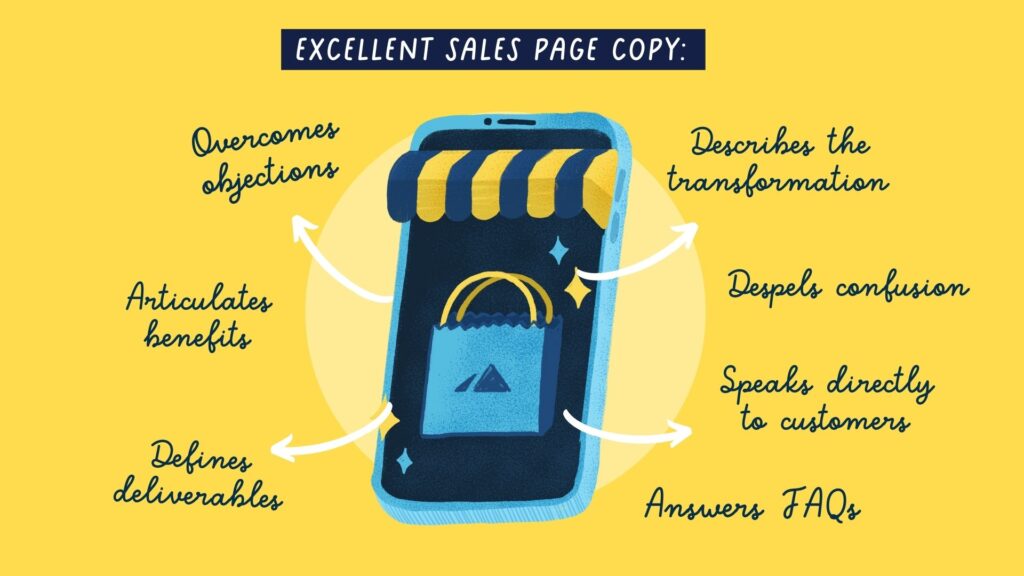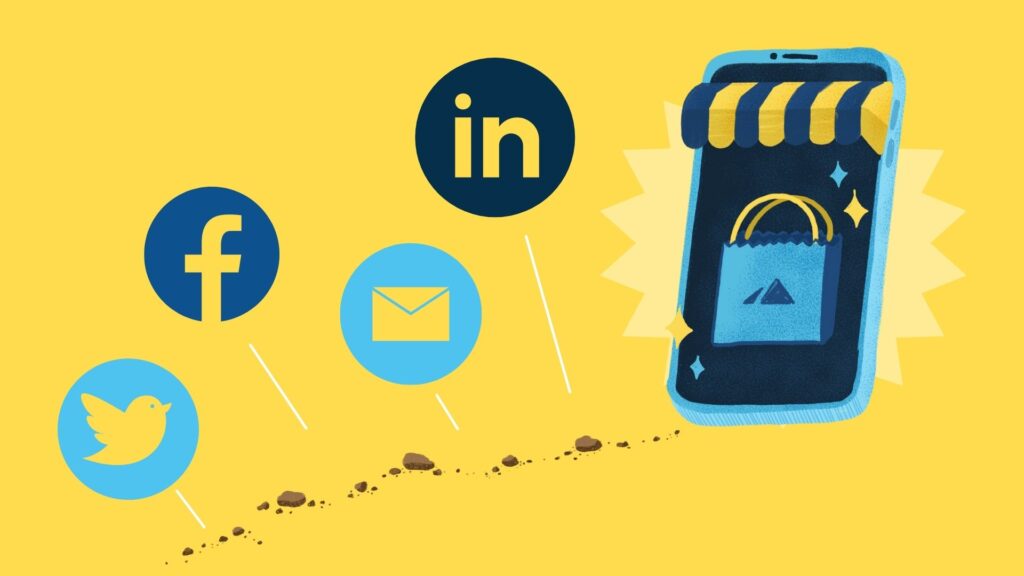Sales copy may be the most powerful words in your business.
It’s got it all: problem and unique solution, client empathy, your company story, all clearly articulated. It’s brimming with powerful whys: why you created the offer, why you, why now. Done well, it hits that sweet spot where your offer and its value meet your client’s specific needs.
Excellent sales page copy:
- Overcomes objections
- Dispels confusion
- Speaks directly to good-fit customers
- Describes the transformation
- Answers FAQs
- Articulates benefits
- Defines deliverables.
It clearly states what’s offered and who it’s for. And it does the reverse, too, outlining for whom the offer is NOT. As I wrote in this post about writing sales copy that doesn’t suck your soul, sales is inextricably linked to how we think of ourselves, our offerings and our relationship to our clients, and sales copy articulates that convergence.

Copywriting is a persuasive craft. Great copy is always working to promote something: advancing ideas, building awareness of a company or product, articulating unique value propositions, speaking directly to right-fit customers and their needs.
But because sales copy is explicitly in the service of action – “buy now,” “add to cart,” “book a call” – it is extra-direct.
That clear intention gives sales copy focus and power.
Too often, though, sales copy is relegated just to your sales page or hidden away in your funnel. Based on conversations with clients and other entrepreneurs, part of the reason may be the mistaken but widespread belief in a strict copy/content divide, in which never the two shall overlap. I take the opposite view: a blurring of lines between copywriting, such as the words on your website, and content, such as your blog or social media posts. This interweaving is more efficient, consistent and strategic.
Sales copy is a lot of work if you write your own, or a lot of money if you hire a writer like me. Let’s maximize that investment. In my ongoing theme of being more strategic in your content and making life easier by repurposing, here are a few ways to raid that piggy bank of potential content.
Breadcrumbs & Lemons
Almost every line of your sales page could stand alone as a Tweet or a short post. These small posts are breadcrumbs you sprinkle along your content path, guiding followers to your sales page and related long-form content. Think visually, too: turn stats or key points from your sales copy into an infographic, or make quote cards from your best lines.

Then create a blog, podcast episode, video or long social post – this is the lemon you can squeeze for content lemonade. That list of objections you overcome on your sales page? That’s great for a Twitter thread. And don’t forget about LinkedIn if deciders are in your target market. Write about industry challenges, the most common objections, or why you’re uniquely positioned to solve this problem.
Snazz up your bios
Sales page “about me” copy tends to be really lively and personality-rich. Look at how you describe yourself in your sales copy. What can you borrow to jazz up your website About section and social media bios? Swap out stale copy with zingy sales page gems.
Media Pitches
Your sales copy is working overtime to describe why your offer is unique. Take that customer gold and repurpose it into a story pitch to the media. If P.R. is part of your marketing strategy, you can easily spin your sales page into a compelling press release.
Repeat Yourself
Don’t worry about being redundant. Your audience needs to see the same message multiple times for it to stick. Your current audience won’t mind the repetition if it resonates with them, and your future fans need to hear from you.
Have Your Sales Copy Done For You
If writing sales copy isn’t for you, you’re not alone. It’s hard to mine content that you don’t feel confident it, or that you doubt describes your offering in a way that will connect with your ideal audience—that’s where I come in. Check out my Sales Page By Friday program, and reach out with any questions.


